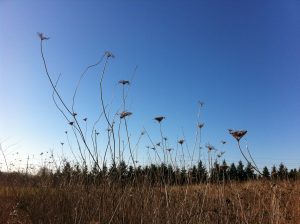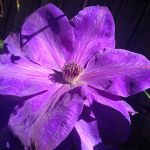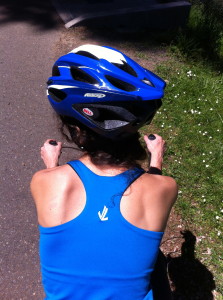Stepping into someone’s life as they navigate end-of-life concerns— physical, emotional, and/or spiritual needs arising on the shifting sand of a disease process or natural decline— is a profound privilege.
People often say, “You work in hospice. Wow, that must be so hard.” (…or heavy, draining, or any number of other words that suggest a weighty emotional slog.) In my experience, it’s many things. Poignant. Intimate. Beautiful. Intense. Fulfilling. Refreshingly real. With all due respect, there is plenty of grit in hospice work. I’m not saying it’s easy but for me it is unquestionably nourishing on a deep level. For those of us who are drawn to this work, it feeds us.

I’ve been drawn to hospice my entire adult life. In 2006, I wrote my masters thesis on integrating acupuncture into hospice care. Then, in 2010, my mom died. She had been diagnosed with inoperable stage 4 metastatic breast cancer almost 2 years prior. She did a lot of chemo and radiation during that time to try to slow the disease process. Then she was in the ICU with pneumonia, across the country from me, when the conversation turned from “let’s wait and see” to “come now.” Everything inside me wanted to be there at her side supporting her through her departure from this world. I flew, thankful for the tail wind, from Oregon to northern Indiana for her final few days of life.
My mom came home from the hospital, no longer conscious, to die at home with family. Our hospice nurse arrived and was amazing. He coached our family on how to move toward her. While I was drawn to that experience, many of my family members did not share that leaning. Our hospice nurse taught us all. He encouraged us in simple ways, telling everyone to hold her hand if they wanted to, to tell her she’s doing a good job, and to watch for any signs of pain or distress in her brow. He explained what usually happens as the body systems are shutting down. He gave us simple tools thus increasing our comfort and confidence with mom and with the dying process. He stayed until she was medicated to a point of comfort, then he picked up the grandkids’ tattered old guitar, tuned it, and played Bach at the foot of her bed for a while. By the time he left, we were settled in to this new stage, better able to support mom to die well. And she did. Quite gracefully even. With a few of us sitting around her, sharing stories, I was holding my mom’s hand as she took her last breath. It was palpably peaceful in the room. My mom’s sister noted, “I was so afraid of this and I can’t believe how peaceful it feels.” We basked in some combination of mystery, wonder, and relief. It had been a long road and there was a levity that came with mom’s parting, and a tangible flood of love. The night felt calm and sweetly celebratory of her. (Beautiful job, mom.)
Weeks later, back in my regular life, I went into my office where I practice acupuncture. A friendly acquaintance there asked me how I was. I gushed in an over-sharing sort of way, “It’s been a life-changing few weeks! My mom just died. It was a powerful and beautiful experience. We had hospice and they were incredible! I want to work in hospice! Acupuncture and hospice are a perfect dove-tail and I feel so called to it! Um… how are you?” To which he replied, “Funny you should say that. I’m a hospice chaplain and we just lost our acupuncturist. And I’m doing well, thanks.” Prize-winning synchronicity. And so it came to be, with a little footwork, that I started doing acupuncture in hospice.
Acupuncture in Hospice Care
I’ve done this work for four years now— a steady stream of learning.
I get sent in by the docs and nurses to help patients struggling with any of a range of symptoms but most commonly pain, anxiety, fatigue, difficulty breathing, or nausea. Sometimes I see a patient once or twice, other times I’ve worked with them regularly for many months. I go to their homes or facilities with my travel bag and treat them wherever is most comfortable for them. Some patients are completely bed bound and others are fully up and about living active lives. Some tell me all about how they feel and what they need, while others are nonverbal and sometimes non-responsive so I simply listen to their body, the qualities of their pulse, and often their caretakers that have been on a journey with them and know them so well. Acupuncture is wonderfully adaptive for this full range.
While they are lying in their bed or recliner, I feel the qualities of their pulse, often we talk, and I choose points to address their needs and stimulate relaxation. I gently insert the needles and then we sit together while they rest with the needles in. This time is golden. It is an open door. I feel so blessed to practice a type of medicine that has this built in time to just “be” with my patients. Acupuncture settles the nervous system and often helps people into a deeply relaxed state. I laugh to myself about how once the needles are in, everyone either falls asleep or becomes a philosopher, or both. In hospice we speak of “the ministry of presence” which is what can blossom in this open-ended time with no agenda. Sometimes it is a quiet time, sometimes we do a simple guided relaxation exercise, sometimes they fall asleep, and sometimes patients share about themselves, their lives, and their families. At times in that sharing, old wounds have come out of the shadows for healing. Other times I hear their concerns. And other times I hear about the pies their mother baked when they were little, the sweet moment they had yesterday with their kids or grandkids, how they met their spouse, how they love dance, fishing, gardening, parachuting, dogs, touring on a motorcycle, the hummingbirds that come to the feeder in the window, the castles of Scotland, singing in a choir,… Quiet time, reflection, transformation, rest, stories, listening, connection… this is some of the magic that can happen in the open space during acupuncture treatment.
The hospice philosophy is to support people—patients and families—through their end of life journey. We support patients to be as comfortable as possible and, as one of my colleagues likes to say, we help them to negotiate a soft landing. We support them to die well—according to their wishes. A beautiful part of the hospice philosophy is that it recognizes dying as a personal experience foremost, rather than a medical event. Rather than viewing death as a medical failure, we view it as the last developmental milestone in one’s life. Barbara Karnes, a leader in the field, explains how “dying” is actually a misnomer. She talks about how what we call “dying” is in fact an act of living— the last act of living. Throughout a person’s decline, they are alive. Until it’s over and they are gone, they are living. It is often said that “we die as we lived.” This makes perfect sense when we consider that dying is an act of living, not separate from the rest of one’s life.
People choose differently. This came into sharp relief for me in the years of my mom’s decline. I often found myself thinking of how differently I might approach my life, were I in her shoes. The process taught me the importance of supporting my mom to do it her way. When it’s my time, I want people to support me to do it my way, but this one was hers. We are all complex and we all deserve honoring and support as we go through this last developmental milestone. In a situation where people can either shut down or open up, I am moved again and again by the huge-heartedness I encounter, the thousand watt smiles, and the love expressed, from grand expressions to the tiniest subtlest gestures full of heart, expressions of gratitude. People bring profound courage, vulnerability, openness, and beautiful expressions of love and sometimes humor.
People’s bodies respond differently. Just like with being born everyone’s birth story is different, we leave this life in all manner of exits. Some labor long, some short, some people go out like a delicate flower and others like a freight train. My family was lucky; it’s certainly not always a graceful transition. It’s not the movies. There is a cascade of involuntary processes in the end as the body’s systems shut down. Some people have robust constitutions, some fight long and hard with every ounce of life force in them, others seem to gently let go and float down stream. We never know exactly how it will be and we do our best to support the needs that arise on shifting sand each day, hour, and sometimes minute.
Hospice is not just for the final days or weeks of life. I can not tell you how many times patients’ families have said, “We should have started hospice WAY sooner. We just didn’t know.” Some common misunderstandings leave hospice care underutilized. Hospice does much of its best work for the patient and their family in the months before death. Research now shows that terminally ill patients who get hospice care sooner generally live longer and better than those who don’t. This is often underutilized because people aren’t informed about the support hospice can offer at the various stages that come long before someone is actively dying in their final few days. Hospice is not simply there for pain management but rather offers a spectrum of care for patients and their families to help them to prepare, understand what’s happening, adapt as things are changing, and be supported with their medical needs (including bathing service, medical supplies, wound care, symptom management) and personal needs including spiritual care and bereavement support for the family and friends. There are a lot of logistics that arise when someone dies and that can be overwhelming for anyone who is experiencing a loss. Hospice offers resources and support for what comes after death as well— connecting families with funeral or cremation services in their area, and offering skilled bereavement support for grieving adults and children wherein hospice maintains contact with the family through the first year anniversary of their loved one’s passing and beyond.
We have come a long way in a short time! Hospice is a young movement in our society— it just came to the US in the 1970’s. Although we still have a ways to go with regard to understanding hospice among the medical establishment and our society at large, the consciousness on this topic is evolving. Just a generation ago, it was taboo to even say the word ‘cancer’ and now we have walks, runs, ribbons, and a general acknowledgement that it is vital to acknowledge cancer and patients with cancer. ‘Hospice’ might still be a triggering word for many people but as more and more people are experiencing the profound impact of hospice and sharing their stories, that taboo is waning as well. Sharing our stories is powerful and healing. It is for those who are grieving, those who are sharing, and also for all of us that have the honor of hearing those stories and expanding our understanding of living and dying through them. In a culture where dying has been kept behind closed doors for so long and shrouded with fear, we are hungry for stories of dying well— stories where you can be holding someone’s hand as they take their last breath and you can be well while doing so. Is it too bold to wonder if perhaps in another generation it will be a familiar story that we ourselves could take our last breath and be well then too? Not free of disease or fear but free from suffering? And as hospice continues to make inroads into our paradigm of medical care, it fuels a shift toward a more humanizing, honoring, integrative, personal-experience-centered quality of care of the best kind. I anticipate a time in the near future when more doctors won’t be afraid to suggest hospice to patients and more patients won’t be afraid to hear it— a transformation we are ready for.
In loving memory of Julie and Ruth.



